In the architecture, engineering, and construction (AEC) industries, new technologies are advancing with each passing day that makes the process of construction smarter, more streamlined, and indeed futuristic. When it comes to embracing the possibility of new innovative technologies, the AEC has long been at the forefront. As shown by trends like 75% of the construction industry adopting BIM or technologies like augmented reality and virtual reality seeing a 50% climb in popularity in the construction industry in just one year, construction companies are striving to lead when it comes to next-generation technologies.
The technology revolution in the construction industry is only just beginning. Whereas 3D modeling and CAD took the industry from the 20th century to the 21st century, the advent of artificial intelligence, machine learning, and more are poised to bring today’s AEC industries into the future.
Technologies Disrupting the Construction Industry
Those who have followed the AEC industries closely will note that technological disruptions in the construction industry are a common thread throughout the sector’s history. Whereas Revit Architecture has transformed retail space planning, for example, the following nine technologies are poised to become the next big things in construction:
Augmented Reality
As previously mentioned, 3D modeling software took architects off the paper drafting table and onto the computer. In a similar trajectory, augmented reality (or AR) is poised to take the industry from viewing models on a computer screen to seeing them in front of their very own eyes.

Key Takeaways for the AEC Industry
- New ways to visualize designs: Augmented reality allows you to place models and visual changes on physical spaces in front of you, making you see and feel those changes before they’re implemented, thus transforming the planning, designing, and customer experiences.
- Cost-efficient planning: By allowing designs to be visualized before implemented, AEC gets to benefit from the same benefits as rapid prototyping in getting feedback without having to implement changes.
Virtual Reality
Where augmented reality allows viewers to see new models on top of physical spaces, virtual reality (or VR) can transform them into completely modeled spaces that haven’t even been built yet.

Key Takeaways for the AEC Industry
- Virtual Tours: The use of virtual reality means that potential buyers or renters of a building can feel what it’s like to physically walk through a space no matter where they are, even if they are across the world of the building is yet to be built.
- 3D Visualization: While CAD models could communicate a building’s blueprint, VR allows AEC companies to pitch models and designs to clients through a more immersive 3D visualization that will wow clientele.
Internet of Things
The increasingly connected world is being dominated by the Internet of Things, or IoT, which lets digital devices communicate and interact with each other. Everything can be connected to the IoT, from refrigerators to light bulbs to vehicles and more. The AEC industry is able to leverage the IoT to transform its operations as well.
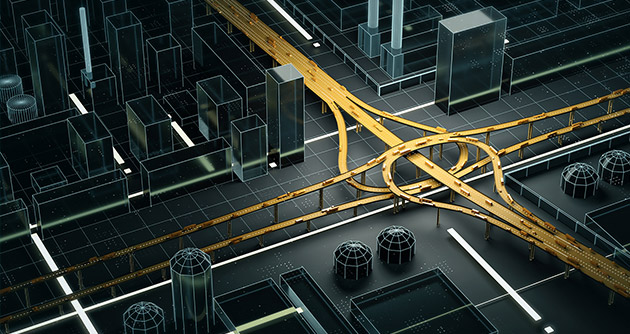
Key Takeaways for the AEC Industry
- Energy savings in operation: The more connected technologies on the Internet of Things in a building, the more efficiently run it can be. By reducing power loads on unnecessary heating/cooling, lighting, and other appliances, occupants will use much less energy without having to lift a finger.
- Smart cities: The more connected a series of buildings are, the closer we’ll get to truly smart cities. In such an arrangement, the IoT will enable buildings to communicate with each other, share clean energy sources, and ensure reliability and affordability of resources.
Self-healing Concrete
Self-healing concrete may sound like a technology that’s straight out of a sci-fi film, but it’s a technology that’s already available today. By including bacteria that get activated by water, this material can literally rebuild itself.
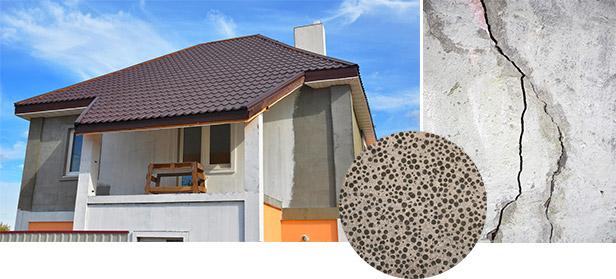
Key Takeaways for the AEC Industry
- Extended material lifetime: Self-healing concrete is able to restore itself when cracks occur, extending the lifetime of the key building material and thus the lifetime of the building.
- Decreased maintenance costs: When a typical concrete block gets damaged, it could mean costly and time-intensive repair. But self-healing concrete simply needs water, and it will get the job done for a tiny fraction of the effort.
Smart Bricks
It made sense when phones become smart, or even when televisions become smart, but what is a smart brick? Think of them like classic Legos and other construction toys for children: they are created in a way that interlocks tightly and reliably in a modular manner, which allows for rapid deployment and construction for a fraction of the effort.
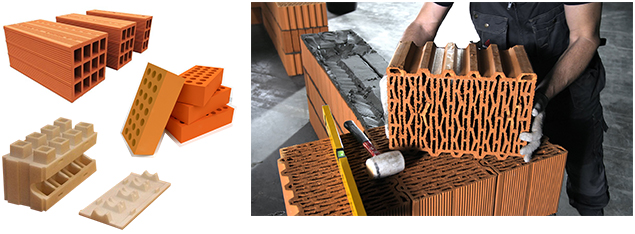
Key Takeaways for the AEC Industry
- Rapid building processes: By eliminating many of the needs for physical processes to connect different building materials that require heavy labor, these smart bricks can allow buildings to go up much more rapidly.
- Modular construction: Smart bricks are also quite adept at modular construction, meaning a single design and supply of smart bricks will allow teams to build large amounts of these buildings where they’re needed with less training and less time.
3D Printing
In every sector it touches, 3D printing has been a revelation of efficiency and cost savings. In the construction industry, 3D printing can be used to manufacture small parts needed for buildings, for creating physical models of designs, or even to build entirely 3D printed houses!
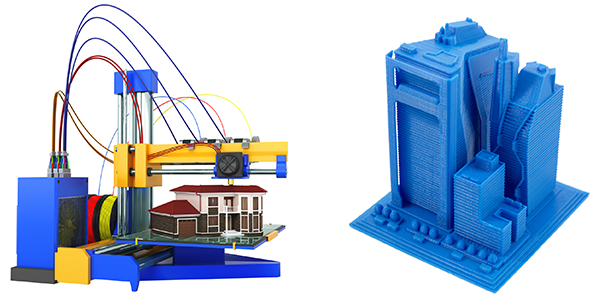
Key Takeaways for the AEC Industry
- Rapid prototyping available for models: A hallmark of the construction and architecture industries has been a physical model of a building presented to a client. 3D printing allows firms to take their CAD models and automatically print out a real-life model.
- New rapid construction processes: Taking that small 3D printed model to a new scale, 3D printers are capable of printing out all the parts necessary to construct an entire building with the right design, allowing for modular and rapid deployment of housing and other structures that may be needed in an emergency situation.
Robotic Swarm Construction
The most compelling technologies humans create often emulate the phenomena already available in nature, hardened over millions and millions of years of evolution. Robotic swarm construction is an AEC example, using a large team of small robots to complete construction tasks with the efficiency of a team of termites.
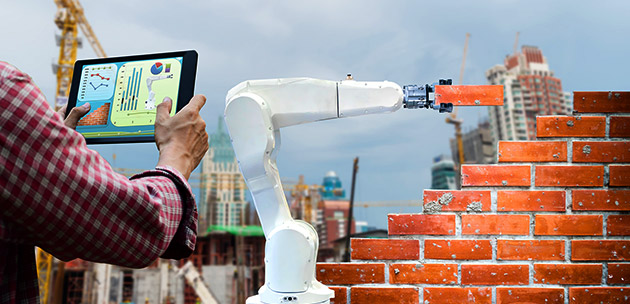
Key Takeaway for the AEC Industry
- Reduced construction costs: Any automation that can be introduced that will reduce the need for paid construction workers in an effective manner means the total building construction cost will go drastically down, especially at scale.
- Reduced construction timelines: Similarly, robotic workers don’t need days off and can work more effectively without breaks. That reality means that robotic swarm construction can lead to more rapid building constructions in the future.
Aerogel Insulation
Aerogel insulation is the result when you take liquid out of a gel, creating a silica structure that’s almost entirely air. However, this semi-transparent material, sometimes referred to as frozen smoke, is a great insulator.
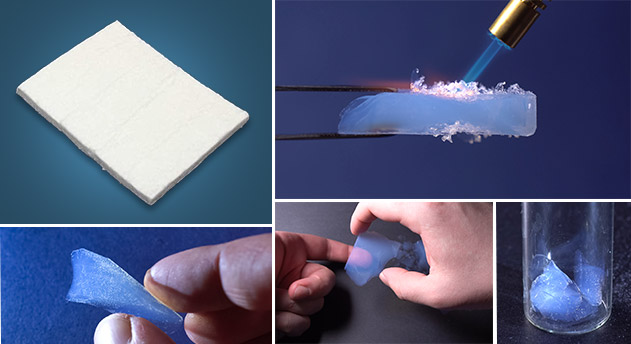
Key Takeaways for the AEC Industry
- Decreased heating/cooling costs: The more effective a building’s insulation is, the less heat will escape. That means heaters and air conditions need to do less work, saving on the energy bill in the building system accountable for the greatest amount of energy consumption.
- A high degree of occupant safety: Some old forms of insulation have since been found to be hazardous to occupant health. But aerogel insulation is not only light, affordable, and effective, but it’s entirely safe.
Transparent Aluminum Strong as Steel
Material for building needs to be as strong as possible to enable it to withstand the elements and the weight of the whole building, but lightweight materials are also valued for their ease in transport and use in construction. Transparent aluminum has been developed that has the best of both worlds, as it’s as strong as (or even stronger) than steel but is ultra-lightweight. The possibilities are mindboggling for how this can transform what we know about the AEC industry.
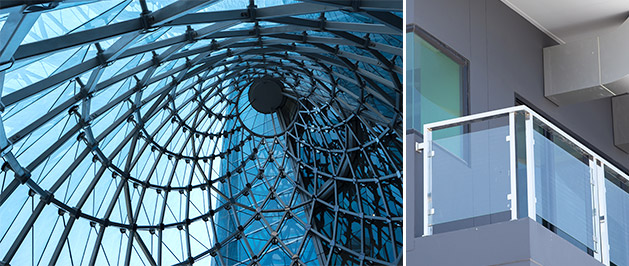
Key Takeaways for the AEC Industry
- New possibilities: A material this lightweight and this strong means that buildings could be safely built to be taller than ever before, maximizing the possibilities for a limited amount of land.
- Ease in construction: With the material being so lightweight, it also reduces a lot of the stressors associated with building materials, especially in large and tall buildings. That efficiency in transportation and construction will reduce construction timelines.
Holistic Benefits from Innovative Technologies
The focus that the construction industry has placed on innovative technology means that the next several decades of AEC will no doubt be the most exciting yet. A spirit of innovation and a commitment to creative solutions will create a new fleet of buildings that are smarter, more efficient, and more people-friendly than ever before:
- Energy Efficiency: The smarter and more advanced than technologies in buildings get, the more energy-efficient they’ll be. Such innovations help building owners save money and help the planet by going green.
- Healthy and Comfortable: These technologies also enable buildings to be designed and constructed in a more occupant-focused way that will optimize the physical and mental health of that inside, ensuring eager buyers and tenants of buildings.
- Connected: The connected technologies mean the buildings using these disruptive technologies will be more connected than ever before with data availability and operational opportunities to streamline operations.
- Affordable: While you may think new technologies would be prohibitively expensive, the truth is they pay for themselves quickly in energy, operational, and other savings. A forward-looking, technology-driven building is one that reduces its long-term operational costs.
- Durable and Long-Lasting: At the same time, AEC firms that embrace these disruptive technologies will create buildings more able to stand the test of time, be robust, and extend the lifecycle of the typical building.
Implementing Futuristic Technologies in Your Building Designs
These disruptive innovations in the AEC industry are some of the most exciting developments in the construction industry’s history. To cope with the change, staying ahead of competitors, and, moreover, to increase operational efficiency, integrating these technologies into the system are a must.
IndiaCADworks (ICW) offers a wide array of services that caters to the AEC industry and can specifically help you adopt these forward-looking and innovative technologies. With almost two decades of experience, ICW has seen the evolution in the construction field and has been assisting realtors, entrepreneurs, and construction firms with architectural engineering, civil engineering, and BIM services. Take advantage of our software-enabled services and get in touch with us for a free consultation to learn more about how we can help.
-IndiaCADworks
IndiaCADworks



